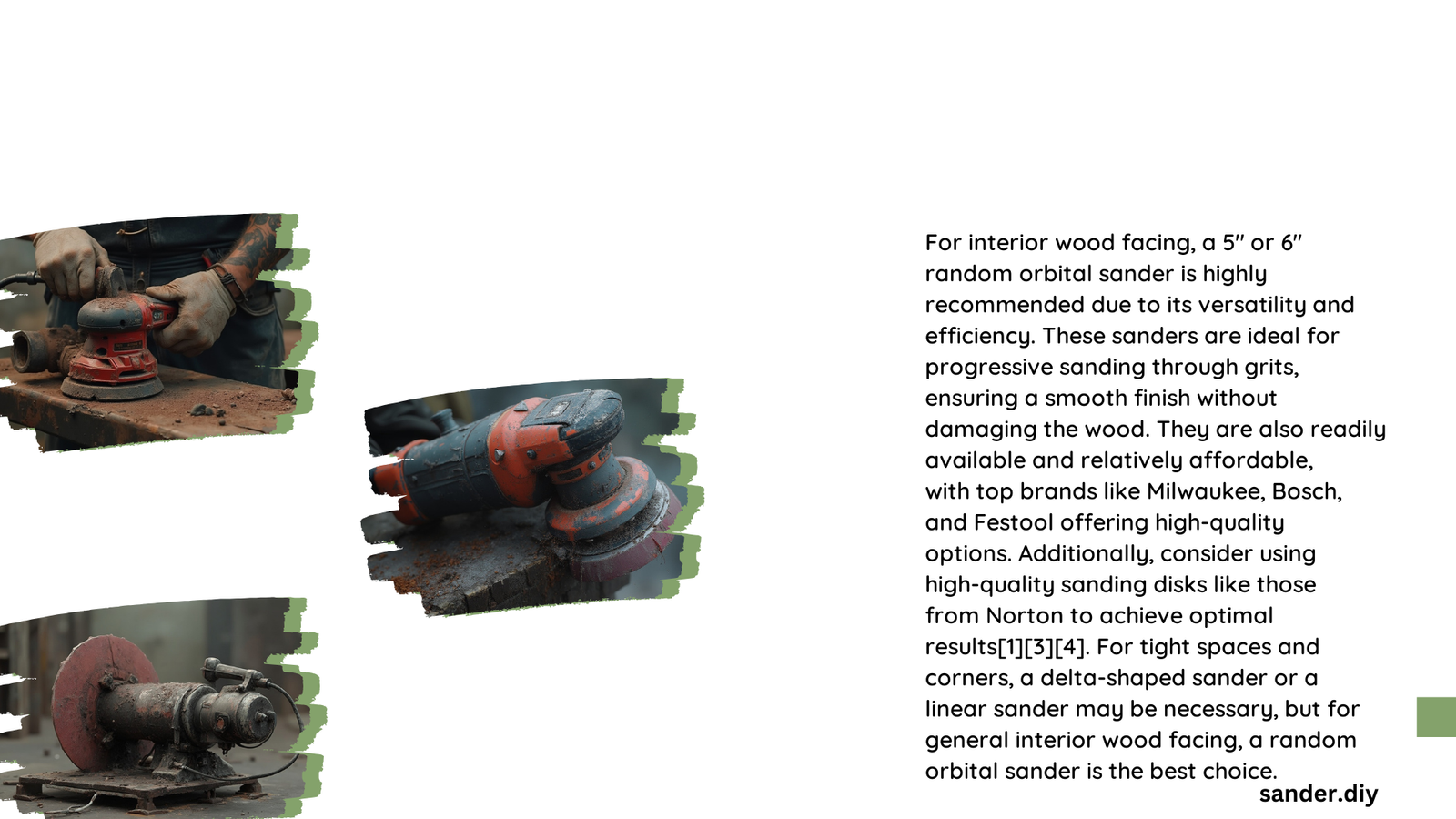When it comes to interior wood facing projects, choosing the right sander is crucial for achieving a smooth, professional finish. Orbital sanders are highly recommended for their efficiency and ability to produce a flawless surface without leaving swirl marks. This guide will explore the best sanders for interior wood facing, including their specifications, features, and techniques for optimal use.
What Are the Top Orbital Sanders for Interior Wood Facing?
Bosch ROS20VSC Random Orbital Sander
The Bosch ROS20VSC is a top-tier choice for interior wood facing projects. Here’s why:
- Type: Random Orbital Sander
- Power Source: Corded
- Speed: Variable speed control from 7,500 to 12,000 OPM
- Weight: Approximately 3.5 pounds
- Features:
- Compact design for easy maneuverability
- Ergonomic grip for reduced fatigue
- Built-in vacuum port for efficient dust collection
- Wood Compatibility: Excellent for cedar, walnut, and ash
- Cost Estimate: $100-$150
This sander’s versatility and power make it ideal for smoothing various wood types commonly used in interior facing.
DeWalt DCW210D1 Random Orbital Sander
For those who prefer cordless tools, the DeWalt DCW210D1 is an excellent option:
- Type: Random Orbital Sander
- Power Source: Cordless (20V Max battery)
- Speed: Variable speeds between 8,000 and 12,000 OPM
- Weight: Approximately 3.3 pounds (without battery)
- Features:
- Compact design for tight spaces
- One-handed locking dust bag
- Uses 5-inch 8-hole hook-and-loop sanding discs
- Comfort: Highly praised for extended use
- Cost Estimate: $100-$150 (excluding battery and charger)
The cordless design offers greater mobility, making it perfect for large interior wood facing projects.
Makita BO5041K Random Orbital Sander
For those seeking professional-grade performance, the Makita BO5041K stands out:
- Type: Random Orbital Sander
- Power Source: Corded
- Speed: Variable speed control from 4,000 to 12,000 OPM
- Weight: Approximately 3.9 pounds
- Features:
- Rotatable handle for improved control
- Sealed switch for durability
- Ball-bearing construction for long-term reliability
- Applications: Excels in deck, cabinetry, and furniture sanding
- Cost Estimate: $150-$200
Its robust construction and versatile speed range make it suitable for various interior wood facing tasks.
What Grit Progression Should Be Used for a Smooth Finish?

To achieve a flawless finish on interior wood facing, follow this grit progression:
- 80-grit: Start with this coarse grit to remove rough wood grain and old finishes.
- 120-grit: Move to this medium grit to further smooth the surface.
- 220-grit: Use this fine grit for the final sanding to achieve a very smooth surface.
- Optional: For an ultra-smooth finish, consider using 320 or 400 grit, followed by buffing with micro-grit sandpaper.
This progression ensures a gradual refinement of the wood surface, resulting in a professional-quality finish.
What Power and Weight Considerations Are Important?
When selecting a sander for interior wood facing, consider these factors:
- Power: Aim for sanders with 200-400 watts output for most interior tasks.
- Speed Control: Variable speed (typically 4,000-12,000 OPM) is crucial for different wood types and finishes.
- Weight: Opt for lighter sanders (3-4 pounds) to reduce fatigue during extended use.
Remember, while heavier models may offer more power and stability, they can be tiring to use for long periods.
What Challenges Might Arise and How to Address Them?
Dust Collection
Challenge: Excessive dust can impair visibility and create a messy work environment.
Solution:
– Choose sanders with efficient dust collection systems.
– Consider using a shop vacuum for enhanced dust management.
– Wear appropriate protective gear, including a dust mask.
Cross-Grain Marks
Challenge: Improper sanding technique can result in visible cross-grain marks.
Solution:
– Always sand in the direction of the wood grain.
– Use random orbital sanders to minimize the risk of cross-grain marks.
– Practice proper technique, moving the sander slowly and evenly across the surface.
Battery Life (for Cordless Sanders)
Challenge: Cordless sanders may run out of power during long projects.
Solution:
– Keep spare batteries charged and ready.
– Invest in a reliable charging system for uninterrupted work.
– Consider a corded model for very large projects or continuous use.
How Do Cost Estimates Compare Among Different Sanders?
Here’s a quick comparison of the cost estimates for the recommended sanders:
| Sander Model | Estimated Cost Range |
|---|---|
| Bosch ROS20VSC | $100-$150 |
| DeWalt DCW210D1 | $100-$150 (without battery) |
| Makita BO5041K | $150-$200 |
Note that these prices are approximate and may vary based on retailers, promotions, and included accessories.
What Are the Key Takeaways for Choosing a Sander for Interior Wood Facing?
- Orbital Sanders: Best choice for smooth finishes without swirl marks.
- Variable Speed: Essential for adapting to different wood types and finishes.
- Dust Collection: Crucial for maintaining a clean work environment.
- Weight and Ergonomics: Important for comfort during extended use.
- Grit Progression: Follow a proper sequence for the best results.
- Power Source: Choose between corded for continuous use or cordless for mobility.
By considering these factors, you can select the ideal sander for your interior wood facing projects, ensuring professional-quality results and efficient work.
